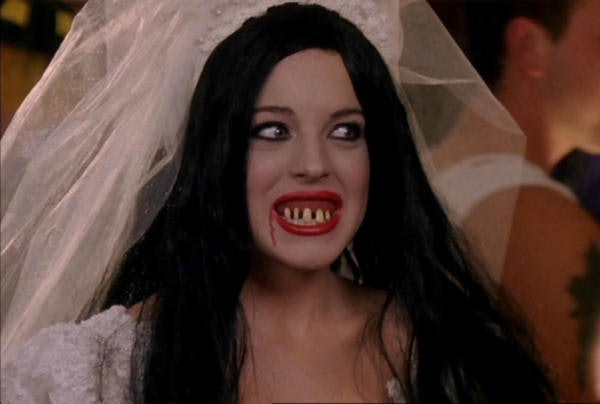Laura Mulveys representation theory focuses on the idea of the male gaze. The idea of the male gaze is that film directors - such as Gary Ross and Mark Waters - place woman in films to draw people in who may find them attractive. Laura Mulveys believes that males would drool and provide more interest over films with "sexy" people in, rather then people with "ugly" or who the world would see as "unattractive." I believe that this apply for woman as well. The majority of us are guilty of only wanting to watch a film as a "hot" or "attractive" person is in it. After a while, the male gaze gently cancels out the fact that woman are more than sex symbols, and they're actually good actors.
Henry Jenkins theory has the constant idea of always breaking the rules of Genre. For example, One film has lots of different element of Genres. Eg. Shaun of the dead. In the Shaun of the dead, people could argue that its a horror film. Others could argue that its a romance film, and also even a comedy film. Henry Jenkins idea was that things are changing dramatically over time to try and make the audience more interested and get lost in the magic of film.In my opinion, Mean girls is a comedy, romance and drama all in one. It also has elements of horror (the Halloween party, and when Regina gets hit by the bus - at the end)
The audience theory places more focus on the consumer, or audience, instead of the actual message itself by asking “what people do with media” rather than “what media does to people." In mean girls, they show this theory by - instead of having ,media - they have the burn book. The burn books about girls writing bitchy and snakey things about other girls. I think this has been put in place to make the film more entertaining (because - for some weird reason - we are entertained by watching someones life fall apart in a movie) the burn boo is more about what people do with the information that they're told, rather than what the information hat got out, does to the people. skip to 2mins 26 when watching the clip. At 3mins 25, Janice says something that sums up this theory perfectly.
Todorov's narrative theory suggests that all narratives follow a three part structure where they begin with equilibrium, where everything is balanced, progress as something comes along to disrupt that equilibrium, and finally reach a resolution, when equilibrium is restored. Mean Girls follow. Mean Girls follow this rule. For example: Cady joined s new school. She then meets her 2 first and best friends (Damien and Janis), she then meets the plastics. Shes told to spy on the plastics. She soon spends all of her time with the plastics and looses herself. She then becomes a plastic and makes lots of things up. The school erupt and act like they're animals. Cady apologizes and joins the mathletes. She then finds herself again and becomes friend with everyone after breaking peoples trust.
Mise-en-scene
Costume: the girls wear short and defining clothes. This could represent that they're confident and like to show off. Also the fact that they're wearing pink imply that the genre is a teen movie and they possibly have quite girly personality.
Character expression and movement: Karen is baffled and shocked in this picture. The fact her jaw is hanging wide open backs up the fact that she cant believe something shes seen, or heard on the phone.
In this frame, its a dark and gloomy, illustrating that something shady could possibly be going on. Also, lighting are used to highlight facial features.
Cinematography: In this scene, the camera ,goes around all the tables to possibly show that all the different friend ship groups are surrounded and stuck in there own little circle (lunch time table) due to people putting labels on them. It could also suggest that they're not "allowed" to venture outside there labels and they ca only be that one thing that they're set to be.


No comments:
Post a Comment